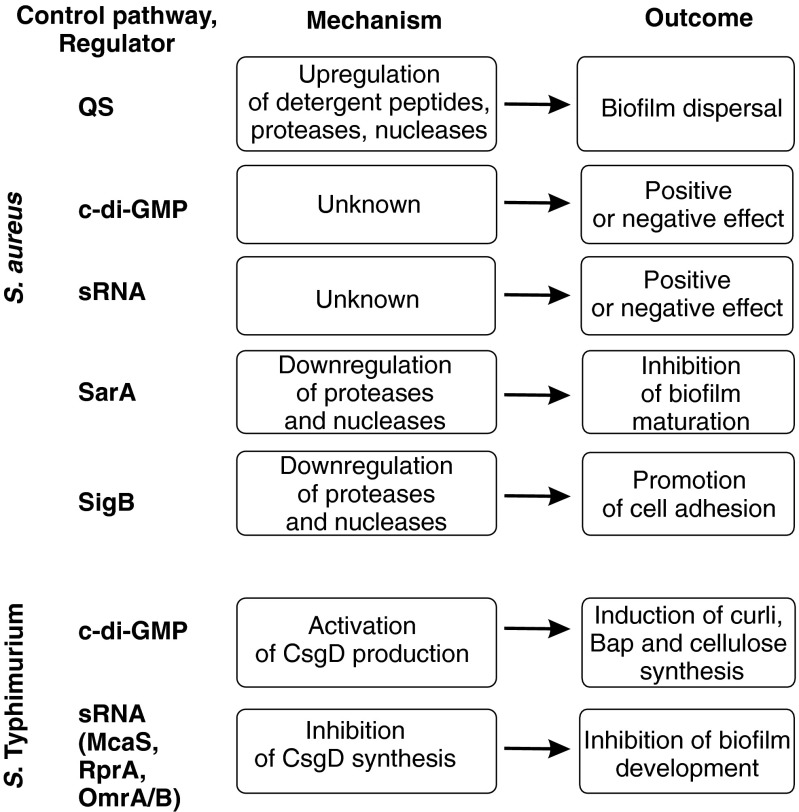Fig. 4.
Control of biofilm formation in S. aureus and S. Typhimurium. S. aureus: biofilm control by five main regulatory factors is shown. QS positively regulates the synthesis of detergent-like peptides, proteases, and nucleases, resulting in biofilm dispersal. The involvement of c-di-GMP and sRNAs in biofilm regulation is still controversial, and the mechanism of their activity is unknown. SarA inhibits the expression of proteases and nucleases and, thus, promotes the development of immature biofilm. Alternative sigma factor SigB promotes the expression of adherence factors and, thus, positively regulates the initial steps of biofilm formation. S. Typhimurium: c-di-GMP activates the master CsgD and, subsequently, increases the synthesis of curli, Bap, and cellulose. Several sRNAs (McaS, RprA, OmrA/B, and possibly GcvB) inhibit the translation of CsgD mRNA and inhibit biofilm development

